"Self-censoring journalists," who "imprison themselves" and "live behind invisible bars" (as described by Turkish journalist Ahmet Sik), are a U.S. species that afflicts PR industry coverage.
Martin Luther King Jr. said: “Our lives begin to end the day we become silent about things that matter.” Also: “The only thing necessary for the triumph of evil is for good men to do nothing.” (Edmund Burke)
The first week in May, when World Press Freedom Day is celebrated, puts us in touch with kindred journalistic souls who battle information-blocking regimes of one sort or another.
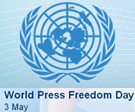 The U.S. has plenty of self-censoring journalists as well as professors and trade group officers/staff who “imprison themselves” by turning a blind eye and deaf ear to obvious abuses in the communications industry.
The U.S. has plenty of self-censoring journalists as well as professors and trade group officers/staff who “imprison themselves” by turning a blind eye and deaf ear to obvious abuses in the communications industry.
This blog is an indictment of individuals and organizations that are sitting on the sidelines when they should be speaking up about such abuses. They know what’s going on but are behind “invisible bars.”
Media attempting to cover the PR Society of America, the “world’s largest” PR association, are confronted with a host of information-blocking policies and practices that frustrate coverage of a group that allegedly champions “the free flow of information.” This sets a bad example for its 22,000 members, said Mark Hamrick, 2011 president, National Press Club.
There are already enough restrictions on information flow without the world’s biggest “communications” group adding to them. Secrecy and press-avoidance were at the root of the 2007-08 meltdown that affected all Americans.
More than information is at stake. Another important issue is jobs. Networking is the main route to jobs and projects, according to career advisors. “Networking is how most job leads are uncovered and most people are hired,” wrote Rick Spann of OI Partners-Gateway Int’l, career consultants, on the “Career Track” page of the Daily News April 24. That is a truism that cannot be repeated too often.
Current Society policy prohibits journalists and writers from joining. Society members include plenty of employers. Out-of-work reporters need to network at Society meetings. CNN recently fired more than 40 editorial staffers. The plight of writers and reporters is obvious at the New York Financial Writers Assn. where 90 of the 300 members are “freelance.” They need to touch all possible bases in search of work.
In denying reporters membership, the Society is up to its old competition-blocking ways, something it promised never to repeat when it signed an FTC order in 1977 that removed two illegal planks from its 1953 “Code of Ethics.”
Those planks were the operative “heart and soul” of the Code—forbidding members from pitching each other’s accounts or jobs (although doing that to non-members was O.K.) and barring contingency fees. Members could not promise to waive fees if no placements or other results were obtained.
The “no encroachment” article was blatantly anti-competitive while the “no contingency fees” article had the effect of limiting “price competition among members,” the FTC charged.
It said the Society and its members, “For many years up to and including the present, have engaged in a combination, conspiracy and common course of action to restrain the aforesaid interstate commerce.”
Contingency fees are common practice in law and allow people of modest means to retain lawyers. The American Bar Assn. has never found anything unethical about that method of charging.
The FTC first sent a letter to the Society. Two staffers then spent a day and half at Society h.q. in the fall of 1976 to explain the demand. Society leaders bucked it to the Nov. 5 Assembly, saying the Assembly alone had the power to amend the Code. After two hours of debate, in which counselors expressed fear of “open warfare” over accounts, the Assembly decided to table the motion for more study.
Undeterred, the FTC returned after the first of the year with a consent decree. Society officers not only had to sign it but had to publicize it throughout the U.S., describing the two offending articles that had been removed from the Code. It was a black eye for PR as well as the Society.
Authors Ripped-Off for 18 Years
Fresh from 23 years of enforcing a “Code” with two illegal linchpins, the Society in 1978 started the practice of collecting articles from newsletters, magazines, books and newspapers, grouping them by subjects, and selling them to the members.
It warned buyers that “original materials” were being provided since copying was “precluded,” and urged them to return the packets within three weeks. In addition to the illegal copying, the Society was committing another offense by creating “new works” when it sold 60-120 pages of materials from sources such as the New York Times, Wall Street Journal, Advertising Age, O’Dwyer magazine and NL, PR Quarterly, BusinessWeek, TV Guide, Broadcasting, etc.
Yet another offense was that the articles were billed as “professional development,” meaning users learned how to do their jobs better, win raises and otherwise advance themselves. Advice was provided on drawing up contracts with clients, blocking staff from leaving with accounts, dealing with difficult editors, winning the best terms from a PR firm, etc. Consult the Info Center when “you need to plan a program strategy,” advised a triple-gatefold, heavy stock flyer listing 1,000 files that were “available within one business day—usually within a few hours.”
Society members, who paid $20 per packet ($55 for non-members) were able to cherry-pick media that would have cost them thousands of dollars if bought separately. Packet volume was 3,400 in 1992 when net profit was $58,220.
Twelve authors who discovered the scam in early 1994 brought the practice to a halt although Society leaders claimed “fair use” and refused to deal with the authors or pay them anything. The long-running copying scam could not have taken place if PR careerists were allowed to work at h.q. from 1980-94.
Only one was allowed on staff, Donna Peltier. About ten careerists had been bounced from the staff when power shifted from major New York companies and PR firms to small PR firms across the nation in 1980. The Assembly became dominated by counselors from small firms as more than 50 new chapters were added, some with as few as 10 members. Whether a chapter had 100 or ten members, it got the same one vote in the Assembly. Accredited members won power and decided that only APRs could hold national office.
Society Whomps Exhibitors
The Society bared its fangs on Jan. 19, 1995 when COO Ray Gaulke showed up at a lunch of the PR Service Council and told the flabbergasted group that the exhibit hall at national conferences was being closed.
Nearly 50 service firms had organized in 1989 to obtain better treatment such as a location close to the general meetings and space for a classroom so new technologies could be explained.
Exhibitors also wanted to stage events that would draw registrants to the hall. They had long complained about low traffic. They said many of those coming by their booths were academics and students who did not buy much but helped themselves to any literature, pens, souvenirs, candy, etc.
Exhibitors also felt they were getting less than full respect because they were not “PR professionals.”
The Society, fed up with dealing with the service firms, said it would seek a single overall sponsor such as IBM or Intel. No such sponsor was ever obtained. After four years of trying to obtain such a sponsor, the Society re-opened the exhibit hall in 1999. The PR Service Council had quickly collapsed and was no longer a bother.
Reporters Need Access for Coverage
PR reporters, barred from membership, cannot access the member database or access the quarterly and annual financial reports. As of 2011, they have been barred from covering the Assembly of the Society where bylaws are proposed and passed and controversial issues such as removing the APR rule for national office are discussed.
The 2010 Assembly was the last one open to the press and stringent new rules were in force—no photographs of the room even before the meeting started and no audio or videotapes of anything. O’Dwyer associate publisher/editor John O’Dwyer was not allowed to cover the meeting because, although he writes stories, he also “sells ads.” That’s what we do but we were allowed in and given a seat off to the side of the Assembly delegates. The Society allowed us to hire a local freelance writer (at $500) to help in coverage.
This was an important meeting because Richard Edelman, Art Stevens and Dave Rickey, the leaders of the “Committee for a Democratic PRSA,” had proposed in May of that year a bylaw change that would let non-APRs vie for national office for the first time since the 1970s.
The Assembly, 70% APR, dispatched the proposal in 20 minutes. The Society denied a request that its proposal be blast e-mailed to the membership and didn’t mention the existence of the Committee in PR Tactics until October.
'Don't Corrupt Channels of Communication'
The Society Code before it was re-written in 2000-01 warned members not to do anything that might “corrupt the channels of communication.” The new Code says “Maintain the integrity of relations with the media.”
The intention of both is for PR people to “keep their hands off the media”—stay at arm’s length.
However, the Society is currently running joint projects with Ragan Communications, long one of the major media covering PR and the Society.
Ragan and the Society are co-sponsoring a “Content Summit for PR, Social Media and Marketing Professionals” May 12-14 in Charlotte, N.C. Cost is $1,095. A webcast of the proceedings May 12-14 is available for $945. The “summit” is publicized on the first page of the Society website.
The Society in the late 1990s was an enthusiastic supporter of Haymarket’s publication of PRWeek/U.S. John Beardsley, 1995 president, and COO Ray Gaulke went twice to London to urge Haymarket to publish a U.S. version of PRW/U.K.
The initial circulation of the magazine was the Society’s membership. Gaulke also sent a letter to Society leaders urging them to support PRW/U.S. with ads. Board member Steve Pisinski, who became chair/CEO in 2000, said the Society’s open support of one of the PR trade publications was highly unethical.
Exhibit Hall Block Is Anti-Competitive
Another instance of an anti-competition Society practice is its refusal to let O’Dwyer reporters into the exhibit hall where up to 50 PR services display their products. Twenty-two of the 47 exhibitors at the 2011 conference in Orlando were either past or present O’Dwyer advertisers and the rest were prospects for both ads and stories.
Interfering with coverage was an anti-competitive activity. Perhaps the Society feels that exhibitors might in the future chose to advertise in the January O’Dwyer’s PR Buyer’s Guide, which lists more than 800 PR products and services in 55 categories, rather than taking a booth. Services should have the full opportunity of deciding which is the better investment. Perhaps many will decide to advertise in both.
A blatant example of interference with coverage took place at the 2011 exhibit hall when Society staffers blocked coverage of a new product that had been sought by MyMediaInfo marketing manager Rachel Sherman.
Sherman had arranged with us to visit her booth, interview her and other MyMediaInfo staffers, take pictures, and do a story for the O’Dwyer website, magazine and weekly newsletter.
When guards blocked the entrance, we asked a friend to tell Sherman that we could interview her in the hall. She came out and we sent her back in with our camera so pictures of the booth could be taken. She quickly returned, saying Society staffers would not let her take pictures with my camera or even her own camera. She then refused any further comment to me.
That is the sort of stuff that belongs in some Third World dictatorship.
Resignation of CEO Murray Is Key Event
We sympathize with Sik who languished in a Turkish prison for 11 months while other alleged journalists played footsie with his persecutors. We can only imagine what sort of pap the media printed while ignoring the issues he raised.
This blog will be sent to more than a dozen J and other groups that should take notice of the PR Society’s policies and practices.
Something new has just taken place. CEO Bill Murray resigned suddenly on Friday, March 7 effective June 1 while nearly ten months remained on his contract. The only reason he gave was that, “After deep reflection, I’ve decided that the time has come for me to leave the Society and pursue new opportunities and new challenges.” He has refused our requests for a further explanation. His move caught the Society by surprise since even now there is no announced search committee or announced specs for the job. Chair Joe Cohen is now the ranking officer at the Society.
Given the lack of a significant explanation, we will supply one: he got fed up with the policies of the Society. Its leaders last October had crowned him with the title of CEO, unprecedented for the top staffer at the Society. It may have turned out to be a crown of thorns because what it really said was that whatever the Society is doing or not doing, it is on his head. He may have realized this in early March.
J Media, Groups Listed
Below is a list of media, J groups and others who have ignored what we have sent them in the past but who might now pay some attention.
--New York Times ad columnist Stuart Elliott and business editor Dean Murphy.
--Associated Press, Gary Pruitt, president/CEO; Paul Colford, dir., media relations.
--Society of Professional Journalists, David Cullier, pres.
--ProPublica, Stephen Engelberg, editor-in-chief. Revenues in 2013 were $11.9M; $4M of 2012 revenues from Herbert Sandler Foundation.
--Investigative Reporters & Editors, David Cay Johnson, president, Mark Horvit, exec. director.
--Prof. Donald Wright, Boston Univ., ex-editor PR Journal of PR Society.
--Committee to Protect Journalists, Sandra Mims Rowe, chair, visiting professor of J ethics, Arizona State Univ. CPJ has $14.9M in net assets.
--Project for Excellence in Journalism, http://www.journalism.org Pew Center, Tom Rosensteil, director. Pew is supported by $5 billion from Sunoco. Tracy Schario, comms. officer, Pew Charitable Trusts, is a national director of the PR Society.
--New York Financial Writers Assn., Pierre Paulden, Bloomberg, president.
--Reporters Committee for Freedom of the Press, Sandra Torry, USA Today, chairman; Bruce Brown, exec. director.
--National Freedom of Information Coalition, Ken Bunting, exec. dir., Missouri School of Journalism.
--PR News, Matthew Schwartz, group editor.
--Poynter Institute, Tim Franklin, president.
--John S. and James L. Knight Foundation, funders of defunct Committee of Concerned Journalists.
--Dean W. Reynolds Journalism Institute, Univ. of Missouri, Dean Mills, advisor. Has taken over mission of Committee of Concerned Journalists.
--Ethics and Excellence in Journalism Foundation, Oklahoma City, Nancy Hodgkinson, senior program officer.


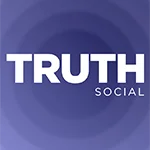 Trump Media & Technology Group today reported a $58.2M net loss on $4.1M in 2023 revenues, a disclosure that drove its stock price down 22.6 percent to $47.96.
Trump Media & Technology Group today reported a $58.2M net loss on $4.1M in 2023 revenues, a disclosure that drove its stock price down 22.6 percent to $47.96.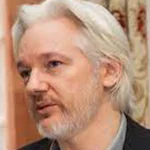 Barry Pollack, an attorney at Wall Street’s Harris St. Laurent & Wechsler, has registered Julian Assange as a client with the Justice Dept. “out of an abundance of caution.”
Barry Pollack, an attorney at Wall Street’s Harris St. Laurent & Wechsler, has registered Julian Assange as a client with the Justice Dept. “out of an abundance of caution.”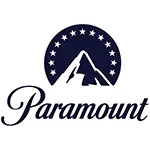 Paramount Global to slash 800 jobs in what chief executive Bob Bakish calls part of an effort to “return the company to earnings growth"... Rolling Stone editor-in-chief Noah Shachtman is exiting at the end of the month due to disagreements with chief executive Gus Wenner over the direction the magazine is taking... The New York Times broke the $1 billion barrier in annual revenue from digital subscriptions in 2023... Press Forward is investing more than $500 million to strengthen local newsrooms.
Paramount Global to slash 800 jobs in what chief executive Bob Bakish calls part of an effort to “return the company to earnings growth"... Rolling Stone editor-in-chief Noah Shachtman is exiting at the end of the month due to disagreements with chief executive Gus Wenner over the direction the magazine is taking... The New York Times broke the $1 billion barrier in annual revenue from digital subscriptions in 2023... Press Forward is investing more than $500 million to strengthen local newsrooms.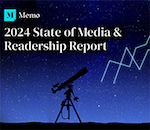 The majority of news articles are read within the first three days of publication, according to a recent report.
The majority of news articles are read within the first three days of publication, according to a recent report.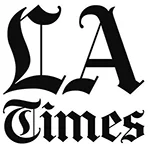 The Los Angeles Times gives pink slips to 115 people or 20 percent of its newsroom staff... TIME is also laying off about 30 employees, which is approximately 15 percent of its editorial staff... The Baltimore Banner, which was launched by Stewart Bainum in 2022 after he failed to buy the Baltimore Sun, added 500 subscribers per day in the three days following Sinclair Broadcast Group's deal to purchase the Sun.
The Los Angeles Times gives pink slips to 115 people or 20 percent of its newsroom staff... TIME is also laying off about 30 employees, which is approximately 15 percent of its editorial staff... The Baltimore Banner, which was launched by Stewart Bainum in 2022 after he failed to buy the Baltimore Sun, added 500 subscribers per day in the three days following Sinclair Broadcast Group's deal to purchase the Sun.


 Have a comment? Send it to
Have a comment? Send it to 
No comments have been submitted for this story yet.